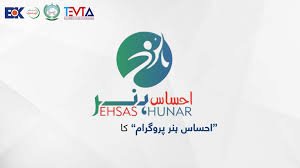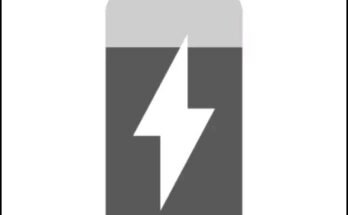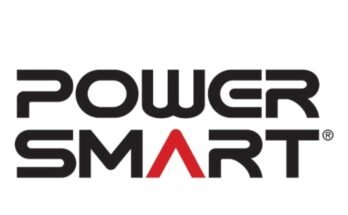In a country like Pakistan, where unemployment and poverty remain major challenges, empowering people with the right skills is a powerful solution. The Ehsaas Hunar Program is one such initiative introduced by the government to equip the underprivileged population with marketable skills. It falls under the broader umbrella of the Ehsaas Program, which is a multi-sectoral approach to reduce poverty and support social welfare in Pakistan.
The purpose of this guide is to provide complete information about the Ehsaas Hunar Program, including what it is, how it works, its features, pros and cons, available alternatives, and why it’s important for individual and national development.
What is the Ehsaas Hunar Program?
The Ehsaas Hunar Program is a skill-development initiative launched by the Government of Pakistan to provide technical and vocational training to unemployed youth, especially those from low-income backgrounds. The word “Hunar” means “skill” in Urdu, and the program aims to ensure that individuals learn practical trades and digital skills that can help them secure employment or start their own business.
It focuses on youth empowerment, women inclusion, and poverty alleviation by teaching job-ready and entrepreneurship-friendly skills. The program is implemented through recognized training institutes in collaboration with organizations like NAVTTC (National Vocational and Technical Training Commission).

How Ehsaas Hunar Program Works
The working structure of the Ehsaas Hunar Program is straightforward and accessible:
1. Application Process
Interested candidates apply online via the Ehsaas Portal or through registered training institutions.
Applicants must be Pakistani citizens and meet specific eligibility criteria, typically aged between 18 and 40.
2. Screening and Selection
After submission, applications are screened based on background, income level, and location.
Priority is often given to those who are unemployed or belong to economically weaker segments.
3. Training Center Allocation
Selected candidates are placed in nearby government-approved training centers.
Training centers include NAVTTC, TEVTA, and private institutes affiliated with the program.
4. Skill Development Courses
Training programs range from technical trades like electrician and plumbing to IT courses like graphic design, freelancing, and web development.
5. Certification and Completion
After successful completion, trainees receive government-recognized certificates that improve their employability.
6. Post-Training Opportunities
In some cases, toolkits and guidance are provided for entrepreneurship.
Participants may also receive job placement support from affiliated institutions.
Features of Ehsaas Hunar Program [Completely Detailing]
The Ehsaas Hunar Program includes a variety of key features that make it effective and accessible:
● Completely Free Training
Participants don’t pay any tuition or registration fees. The government covers all expenses to ensure inclusivity.
● Diverse Skill Categories
Courses are available in various sectors:
IT & Digital Skills: Freelancing, graphic design, SEO, digital marketing.
Technical Skills: Mobile repairing, plumbing, welding, electrician.
Craftsmanship: Tailoring, embroidery, beautician training.
Entrepreneurial Training: Business setup basics, e-commerce.
● Nationwide Availability
More than 700 training centers across Pakistan are part of the initiative, making it accessible in both rural and urban areas.
● Monthly Stipends
Trainees receive monthly stipends for transportation and food expenses during their course.
● Certification
After completing training, participants receive certified documents from recognized vocational authorities like NAVTTC and TEVTA.
● Women-Focused Initiatives
Special attention is given to women empowerment through training in female-centric fields such as sewing, makeup, and home-based businesses.
● Toolkits for Practical Use
Graduates often receive basic starter kits like sewing machines, laptops, or toolboxes to begin working immediately after training.
Pros of Ehsaas Hunar Program [Use Table]
| Pros | Details |
|---|---|
| Completely Free | No fees, making it accessible to all income groups. |
| Skill-Based Learning | Practical training aligned with market demand. |
| Women Empowerment | Special courses and centers for female participants. |
| Nationwide Reach | Available across Pakistan, including remote areas. |
| Certificate Recognition | Government-approved certifications enhance credibility. |
| Monthly Stipend | Financial assistance for travel and food during training. |
| Employment & Business Pathways | Graduates can seek jobs or start small businesses. |
| Toolkit Distribution | Free starter kits help launch a career right after training. |
| Focus on Digital Economy | Courses in freelancing, digital marketing, and e-commerce are available. |
| Cons | Details |
|---|---|
| Limited Seats | High demand means not everyone gets selected. |
| Quality Variance | Not all training centers offer the same standard of education. |
| Short-Term Training Only | Most courses last 3 to 6 months; no long-term advanced specialization. |
| Delays in Stipends | Administrative issues may cause payment delays. |
| Lack of Career Tracking | Limited follow-up on student success or employment after training. |
| Not Available Online | Most courses require in-person attendance; no virtual options yet. |
| Alternative Program | Description |
|---|---|
| PM Youth Skill Development | Government program offering technical training to young adults across Pakistan. |
| DigiSkills.pk | Offers free online training in freelancing, digital marketing, and more. |
| TEVTA (Provincial Programs) | Technical Education institutes across provinces offering various trades. |
| Kamyab Jawan Program | Offers skill training and youth entrepreneurship loans. |
| NAVTTC Initiatives | Nationwide vocational training with industry linkages and job placement. |
| UNDP & NGO Training | NGOs provide vocational skills in collaboration with the government. |
The Ehsaas Hunar Program represents a strategic and inclusive effort by the Government of Pakistan to tackle unemployment, especially among the youth and marginalized communities. By offering free access to high-demand skill training, the initiative is making a significant contribution toward building a self-sufficient, skilled workforce.
While the program faces some limitations such as seat shortages and inconsistent training quality, its benefits far outweigh the drawbacks. With proper expansion, better digital access, and follow-up support, the Ehsaas Hunar Program has the potential to transform lives and reshape Pakistan’s economic future.
If you’re unemployed or looking to gain a new skill for better career opportunities, the Ehsaas Hunar Program could be your gateway to success.



